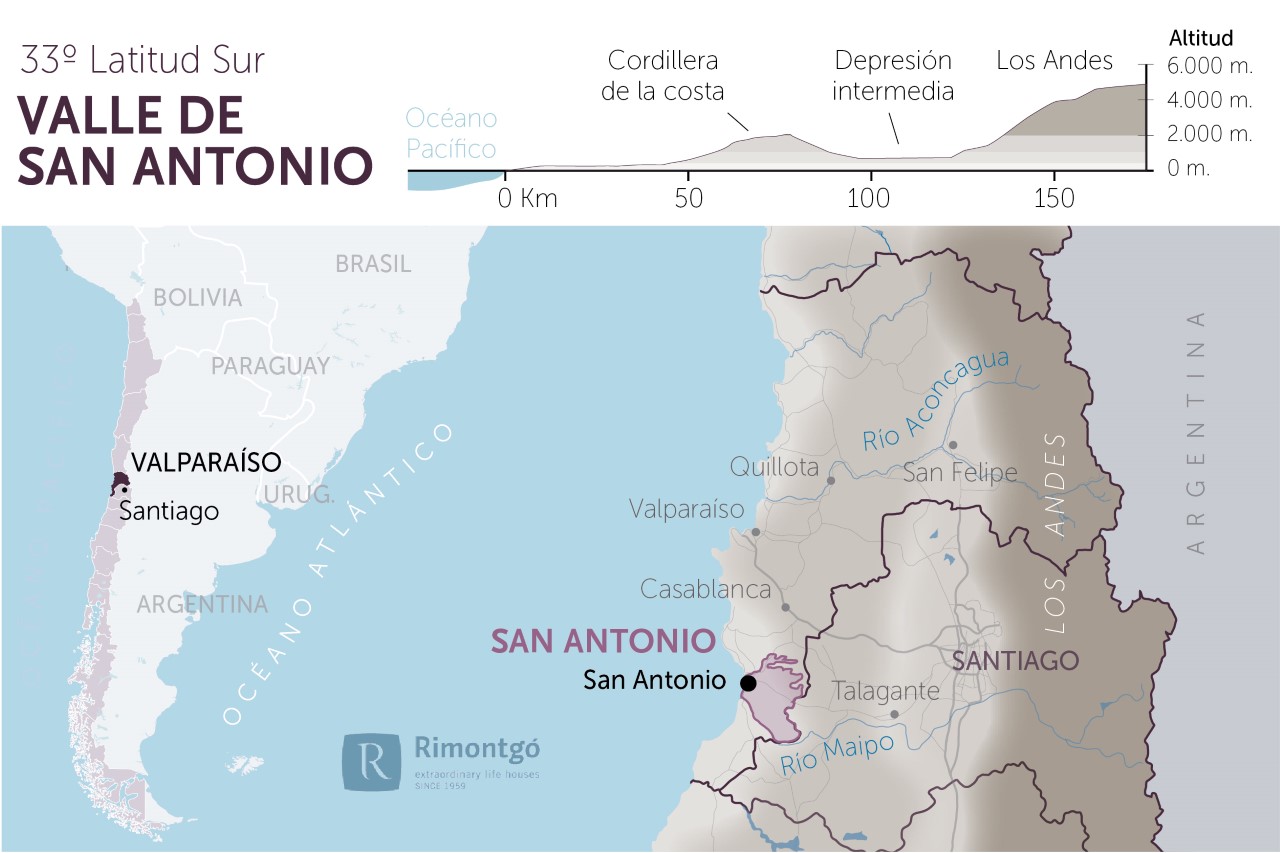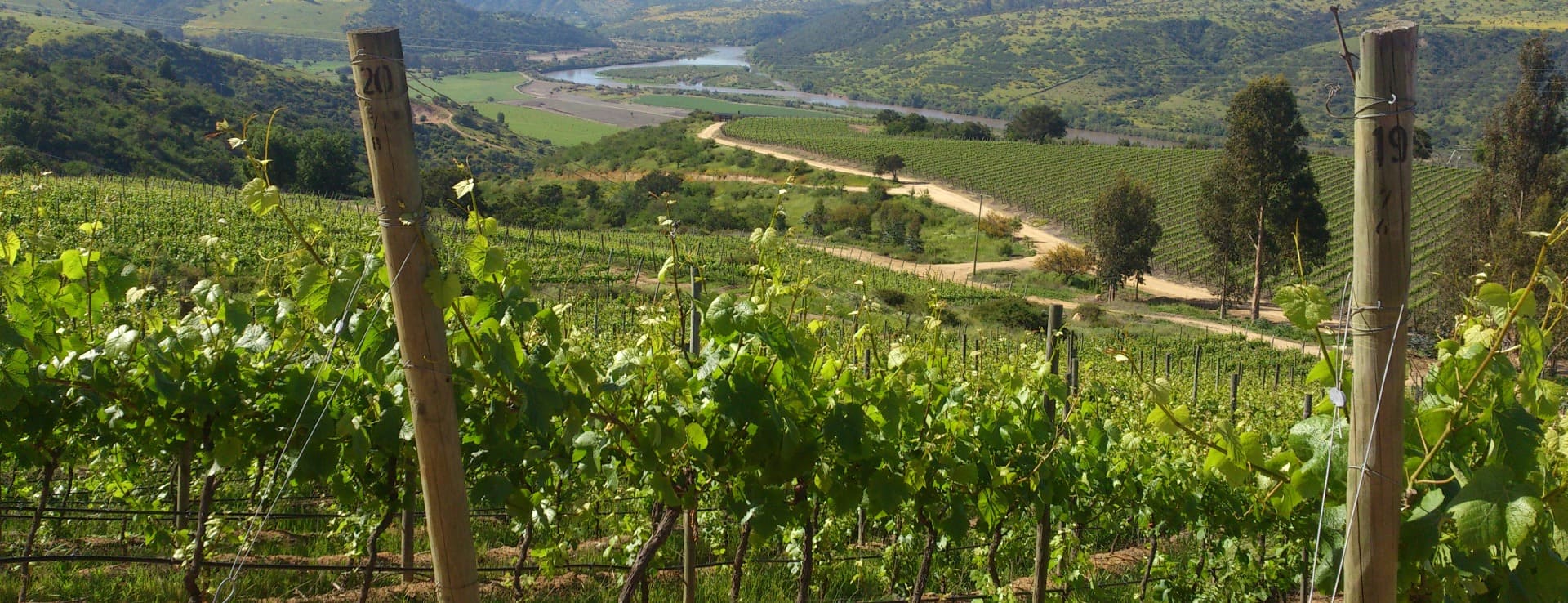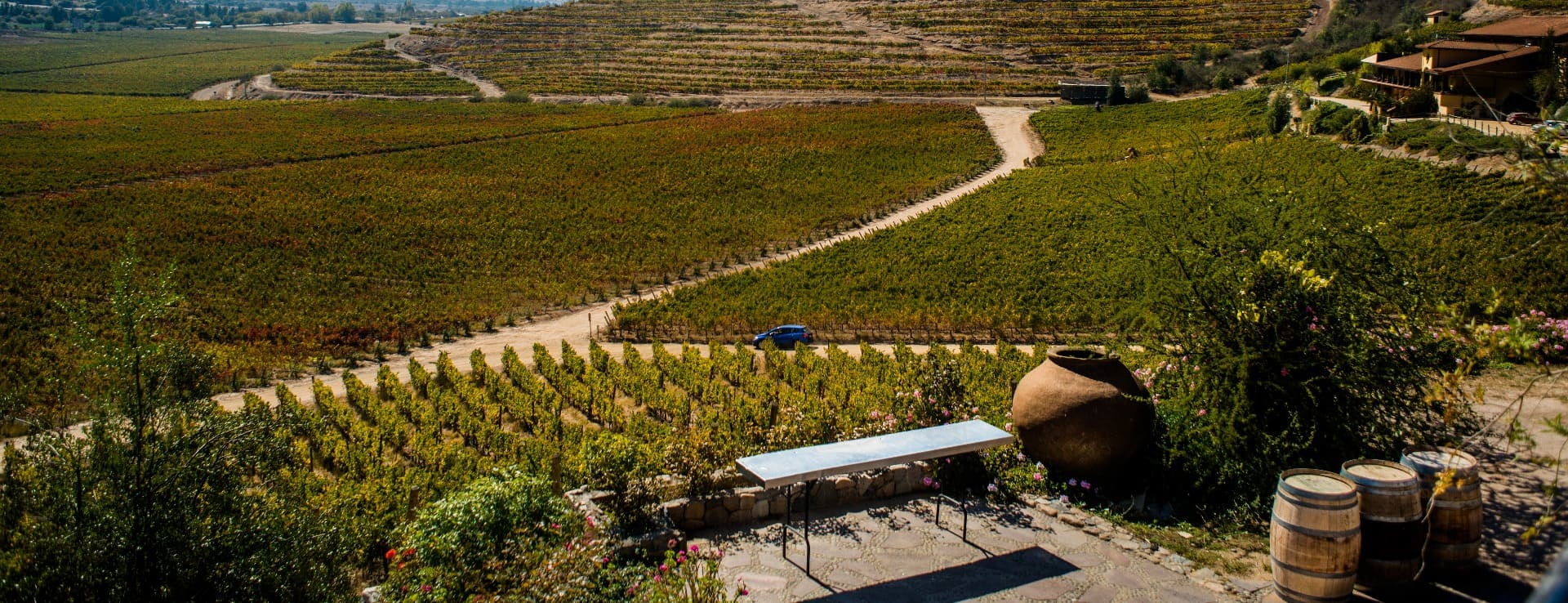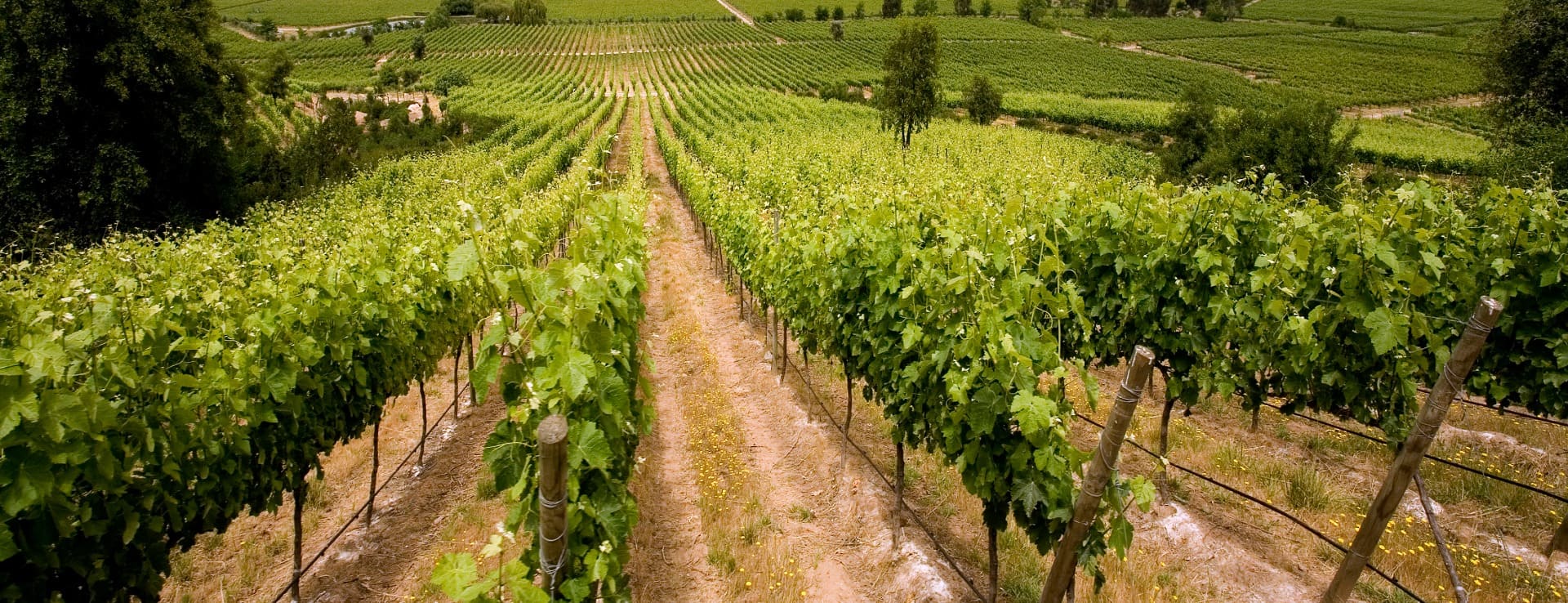Find your winery or vineyard
Infographic of the Denomination of Origin

Change to imperial units (ft2, ac, °F)Change to international units (m2, h, °C)
Total surface area:
2.500 ha6.178 ac
Altitude of the vineyards:
Min: 150m
Max: 200m
Min: 492ft
Max: 656ft
Temperature:
Min: 5º
Max: 22º
Min: 41°F
Max: 72°F
Yearly rainfall:
350 l/m233 l/ft2
Designation of origin Valle de San Antonio and Valle de Leyda
LOCATION AND HISTORY
The designations of origin Valle de San Antonio and Valle de Leyda are part of the San Antonio province, belonging to the Valparaiso region. Both designations of origin enjoy this recognition since 1994. The approximate surface of vineyards in these Valleys amounts to 290 ha.
SOILS
In general, the soils in the San Antonio Valley and Leyda Valley, despite being situated in adjoining areas (Leyda, Rosario, Lo Abarca), do not reach a considerable thickness and are of a rocky nature due to their proximity to the ocean. The drainage of these soils, which are mostly clayey, can be described as moderate.
In the northern sectors of Leyda it is possible to find many soils of granitic character, and as the northern shore of the Maipo approaches, the fluvial soils formed by the Maipo appear next to the typical terraces. In the coming years we will see new projects to the south in these coastal sectors that present the so famous metamorphic rock called slate that, given its characteristics, allows the development of qualitatively superior vines and wines.
CLIMATE
Arriving at the estuary of the Maipo River, behind the city-port of San Antonio, is the Leyda Valley, which is characterized by much lower temperatures than in Casablanca. Mainly because of its greater proximity to the Pacific Ocean and the absence of the Coastal Range, which only ends up being a hillside area of which greater heights allow the Pacific to be seen.
As with neighbouring valleys such as Casablanca, the climate of the San Antonio and Leyda valleys is cold, but with the absence of frost and the low thermal oscillation in the valley, factors that allow for slow ripening of the berries and, therefore, a concentration of unique aromas and flavours that are complemented by the great minerality provided by the granite soils where the vineyard is located. In the particular case of the DO Valley de Leyda, several vineyards are located in front of the sea, so they receive direct ocean breezes. This is the case of the vineyards of wineries such as Casa Marín, Viña Montes, bodegas Leyda or bodegas De Martino. A difference between both sub-valleys in the inland of San Antonio is that while Lo Abarca has diversified its exposure to sunlight, in Leyda they are uniformly planted facing the sea.
TYPE OF GRAPE
The climatic and soil conditions of the designations of origin Valle de San Antonio and Valle de Leyda work out well with the production of grape varieties such as Sauvignon Blanc, Chardonnay and Pinot Noir, vines that have had a significant growth. These are wines of the highest quality in terms of aromas, fresh character and vegetable touches.
In the furthest areas from the sea and therefore with a less influence of the marine breeze, varieties such as Syrah are found. The white wines produced in these two designations of origin are characterised by the minerality and high acidity while the red varieties have a persistent acidity of natural origin. In addition of the aforementioned varieties of these two Valleys, we also find Cabernet Sauvignon, Carménère and Merlot.
Discover more wineries and vineyards for sale in these wine regions in Chile
Subscribe to our mailing list to receive news about wineries and vineyards.





